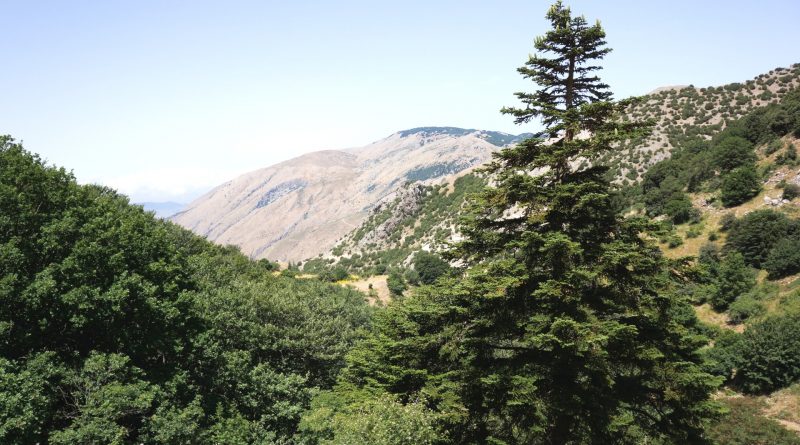Abies nebrodensis
Abies nebrodensis
The Sicilian fir (Abies nebrodensis (Lojac.) Mattei, 1908) is a tree that belongs to the Pinaceae family and is endemic to Sicily. This may have been formed by speciation during the beginning of the last interglacial period.
Systematics –
From a systematic point of view the fir tree of Nèbrodi belongs to the Eukaryota Domain, Kingdom Plantae, Pinophyta Division, Pinopsida Class, Pinales Order, Pinaceae Family and therefore to the Genus Abies and to the A. nebrodensis Species.
Etymology –
The term Abies: [Pinaceae] comes from Abies -tis, a classic Latin name (Virgil, Egloghe), derived from the Sanskrit root abh, ie gushing (of the resin). The epithet nebrodensis originates from the Madonie Mountains which in ancient times were called Nebroidi Mountains (but not to be confused with the current Nebrodi Mountains, to the east of these).
Geographic Distribution and Habitat –
This species was once endemic to the mountains of the northern Sicilian chain; then from 1900 Abies nebrodensis had been considered extinct. It was found, in 1957, in the Vallone Madonna degli Angeli (in the municipality of Polizzi Generosa) on the Madonie. Today there are about thirty specimens surviving, probably due to the isolation and the lower local competitiveness of other stronger species, such as beech (Fagus sylvatica).
Description –
Abies nebrodensis is a tree with an upright or slightly curved bearing, which reaches 10 – 15 m. It has a conical-pyramidal, slightly stocky, dark green color. It is also distinguished by needles that are up to 10 mm long, stiff and pungent and pine cones that are up to 20 cm long.
Cultivation –
The Abies nebrodensis has been included in the list of the 50 most threatened botanical species in the Mediterranean; in fact it is considered by the IUCN a critically endangered species and in 2000, the Madonie Park has started a LIFE Nature project for the conservation of this species. The objective is to safeguard the species by entrusting the seedlings of Abies nebrodensis. So today there are about 3,000 specimens of Abies nebrodensis cultivated in botanical gardens and specialized arboretums, both in Sicily and in other areas of southern Italy.
Uses and Traditions –
The Abies nebrodensis is today destined with the sole objective of preserving and perpetuating the species. Most of the surviving specimens grow slowly on a stony slope and may have escaped the cut due to their modest size. Some specimens produce a certain percentage of fertile seeds with which they are periodically cultivated in nurseries and then transplanted. The professor. Giovanni Ettore Mattei described the Abies nebrodensis, a splendid endemic conifer of Sicily for about 9,000 years. The Ministry of Posts, in 1985, for the series “Salvaguardiamo la Natura”, among others issued a 500 lire stamp, which represents the Fir of Nebrodi.
Preparation Mode –
Obviously, no use is allowed of the Abies nebrodensis, except for cultivation for the conservation and preservation of this species.
Guido Bissanti
Sources
– Wikipedia, the free encyclopedia.
– Treben M., 2000. Health from the Pharmacy of the Lord, Advice and experience with medicinal herbs, Ennsthaler Publisher
– Pignatti S., 1982. Flora of Italy, Edagricole, Bologna.
– Conti F., Abbate G., Alessandrini A., Blasi C. (edited by), 2005. An annotated checklist of the Italian vascular flora, Palombi Editore.
Warning: Pharmaceutical applications and alimurgical uses are indicated for informational purposes only and do not in any way represent a medical prescription; there is therefore no liability for their use for curative, aesthetic or food purposes.


